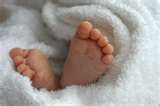One of the most rewarding aspects of being a Podiatrist is being able to help patients who suffer with chronic pain. I always advise chronic pain patients that our goal is to decrease their pain by twenty to eighty percent and that we may never be able to get them permanently pain-free but our goal is to get them to “minimal to mild occasional pain with some flair-ups that, when they occur, they will know exactly what to do.”
Although we offer a wide range of non-surgical treatment options for patients with chronic pain, the first and most basic concept is the easiest but often the hardest to get people to implement. No walking barefoot!
Every time you walk barefoot, you are forcing more wear-and-tear across your joints and you are forcing you muscles, tendons, ligaments as well as your knees, hips and lower back to work harder to stabilize your whole body. What I do recommend for wearing around the house is prescription-strength Croc Clogs with the strap to the back. Crocs are approved by the American Podiatric Medical Association and I advise my patients that if they do nothing else besides stop walking barefoot and wear Rx Croc Clogs around the house, they will have a thirty percent improvement in any knee, hip and lower back pain within three weeks.
Proper shoe-gear is imperative.
There is a simple concept that is completely counter-intuitive to what most people believe to be true about what constitutes a “comfortable” shoe. When is the last time you heard someone go into a shoe store and say, “My foot is killing me – please give me the most rigid sole shoe you have.” Never, right?
What most people say is, “My foot is killing me, what’s your most soft, flexible and cushiony shoe?”
Well, think about it – if you go to the doctor with a broken wrist – they put you in a rigid cast and you instantly get relief because “less motion means less pain.”
When it comes to shoes, what actually feels good is a rigid sole with firm arch support as well as proper forefoot and rearfoot control. Less motion means less pain, less wear-and-tear on the joints and tendons and more biomechanical control of not only the foot but also the knees, hips and lower back.
Of course, there are always exceptions to every rule. For instance, if a patient is ninety years old and doesn’t do a lot of walking, I would place that patient in a supportive but light shoe. Biomechanical control is far more important in active patients.
Have you seen the MBT’s or the new Sketcher Shape-ups? The reason owing to their success (because it’s definitely not their good looks!) is the fact that they have a “rocker-bottom” sole, which provides no motion across the bottom of the foot. The shoe companies when designing this shoe “borrowed” the concept of the rocker-bottom soled shoe from the “below-the-knee-walking boot” that Podiatrist’s use to treat fractures.
On the second visit of any chronic pain patient, I ask them to bring in a bag of their shoes so that we can discuss what is working and what is not working. I find that the first half of my job with any patient is to heal the foot and the second half of the process is, after the foot is healed, that we get the patient into proper shoes, inserts and eliminate any bad habits such as wearing flip-flops or walking barefoot. If I neglect this second part, I am sure to see the patient again and, in the words of Humphrey Bogart, “Maybe not today, maybe not tomorrow but someday and someday soon.”




